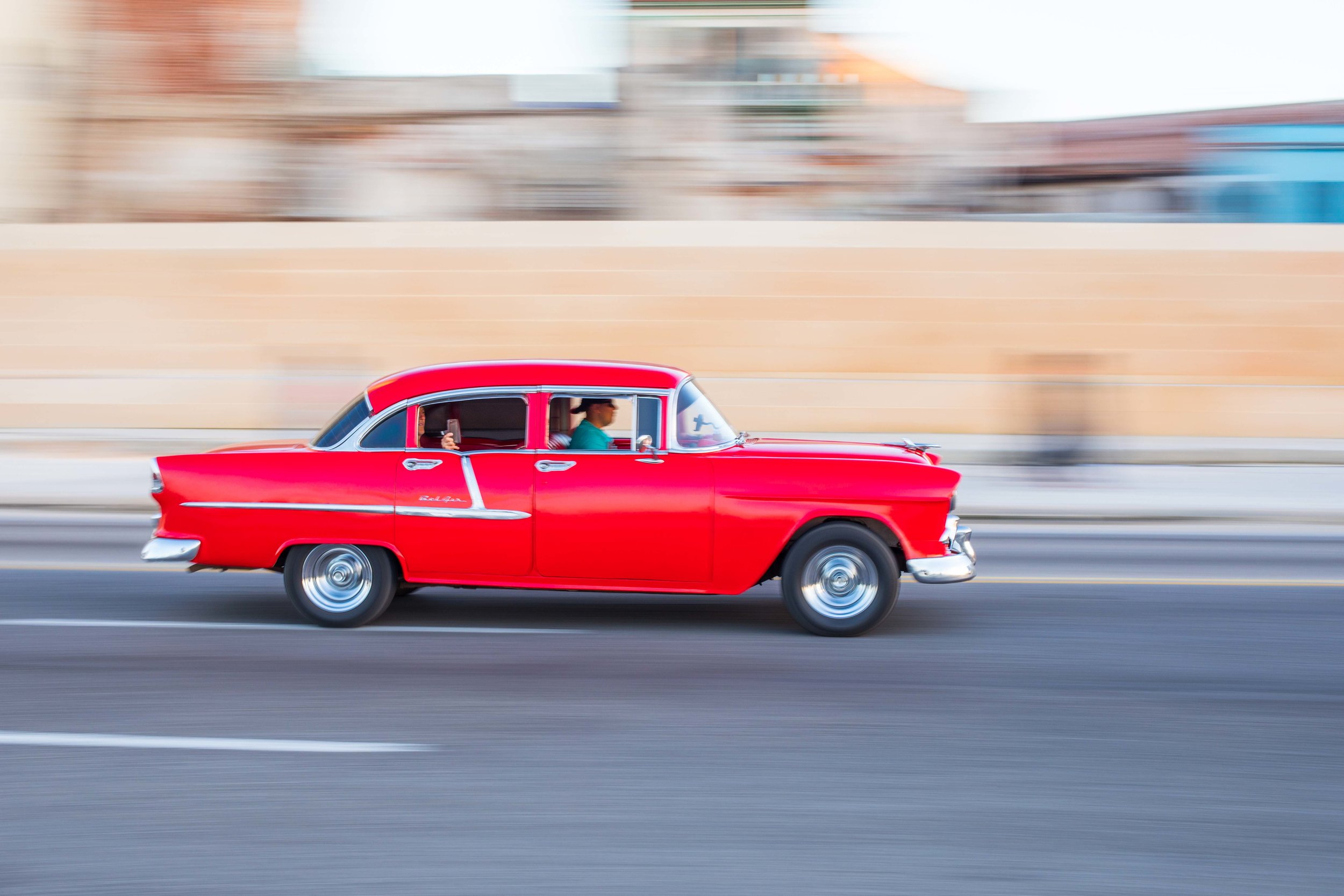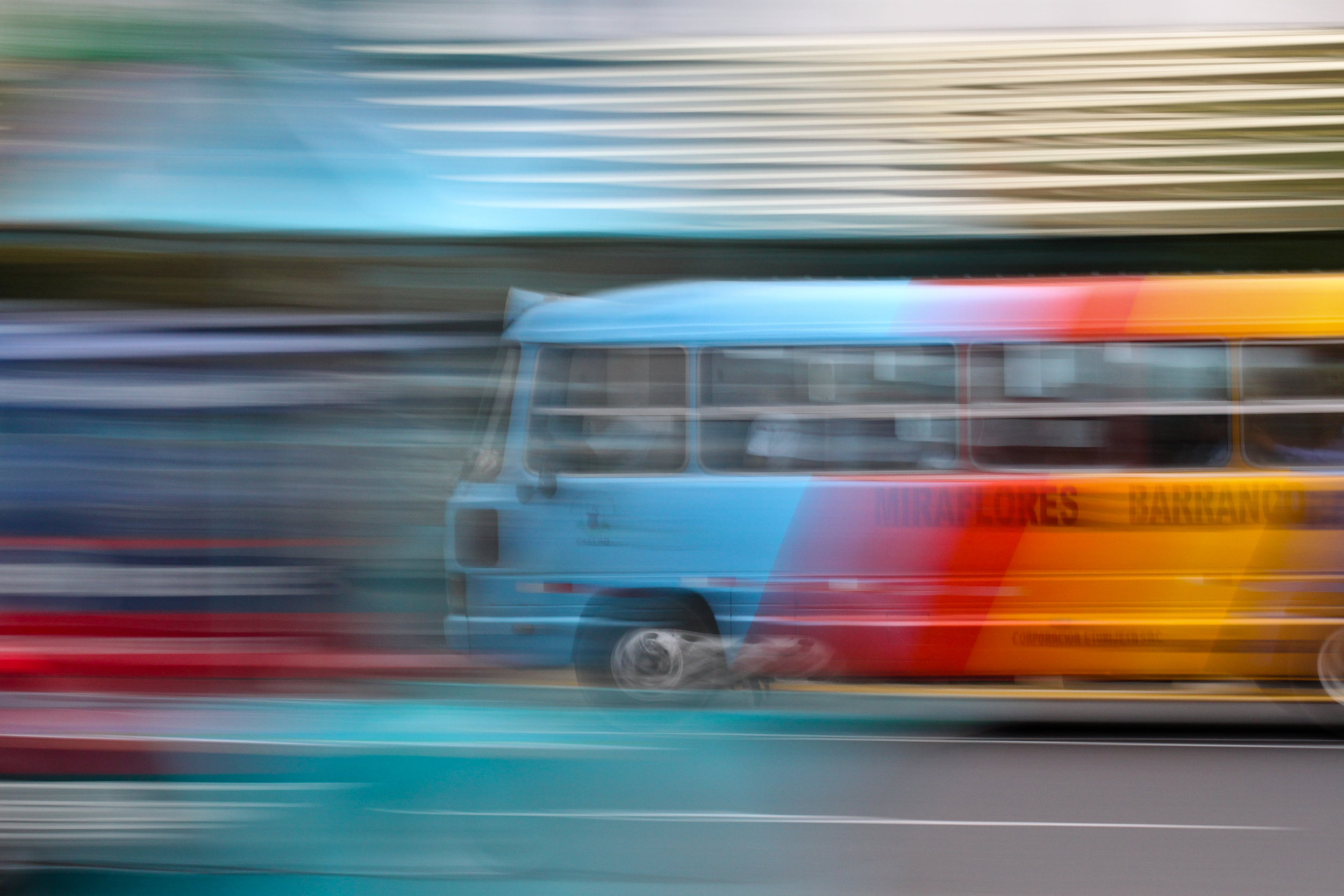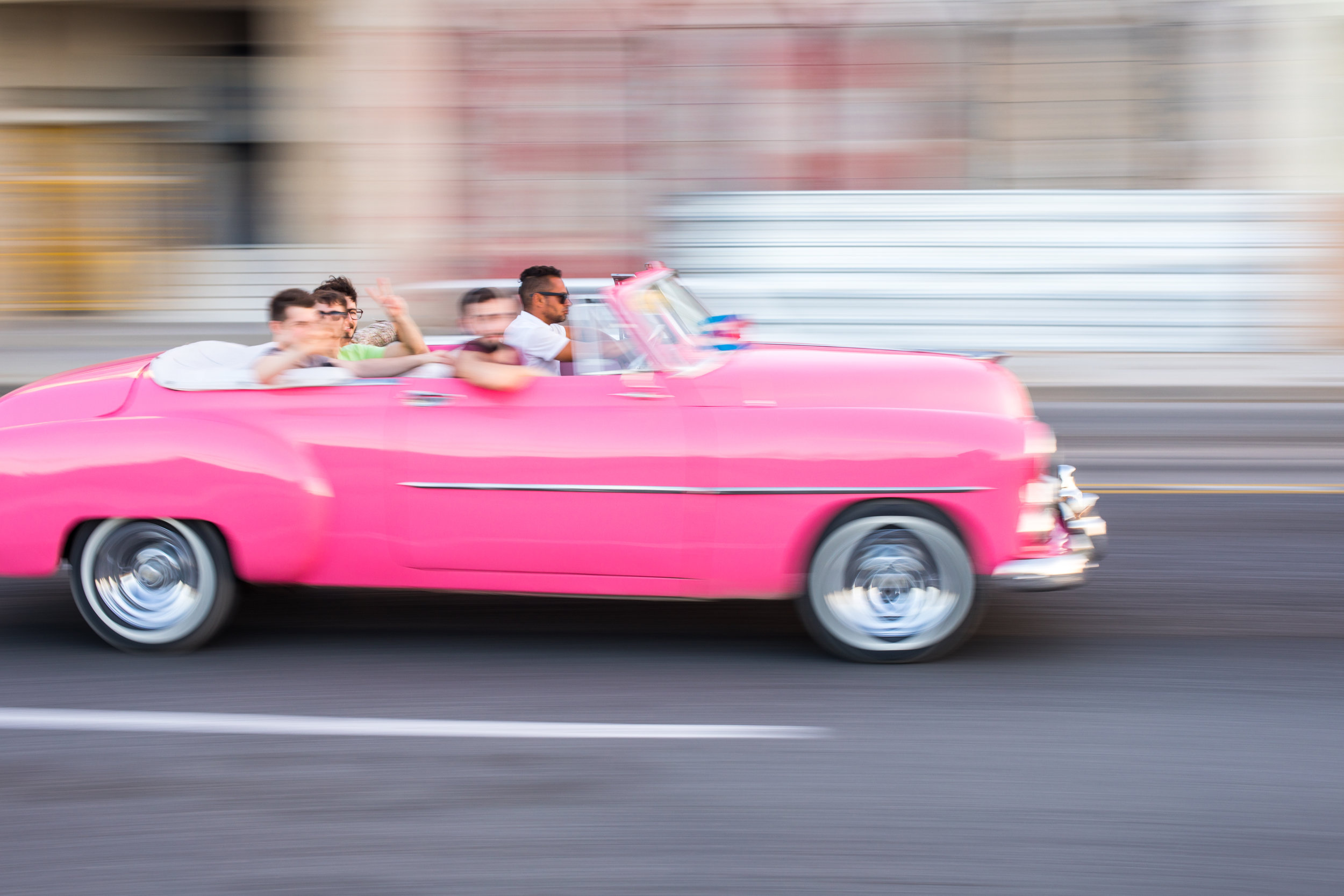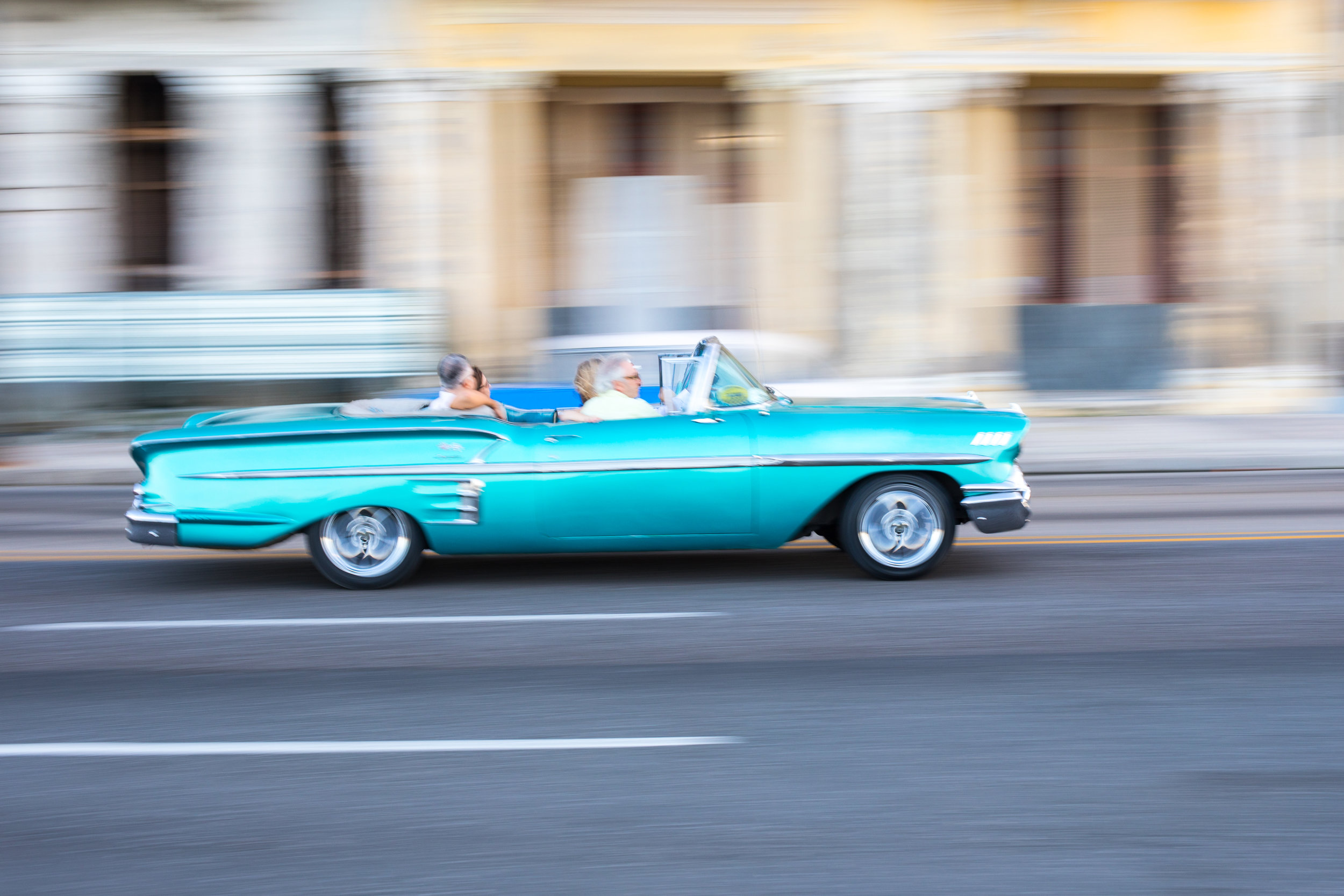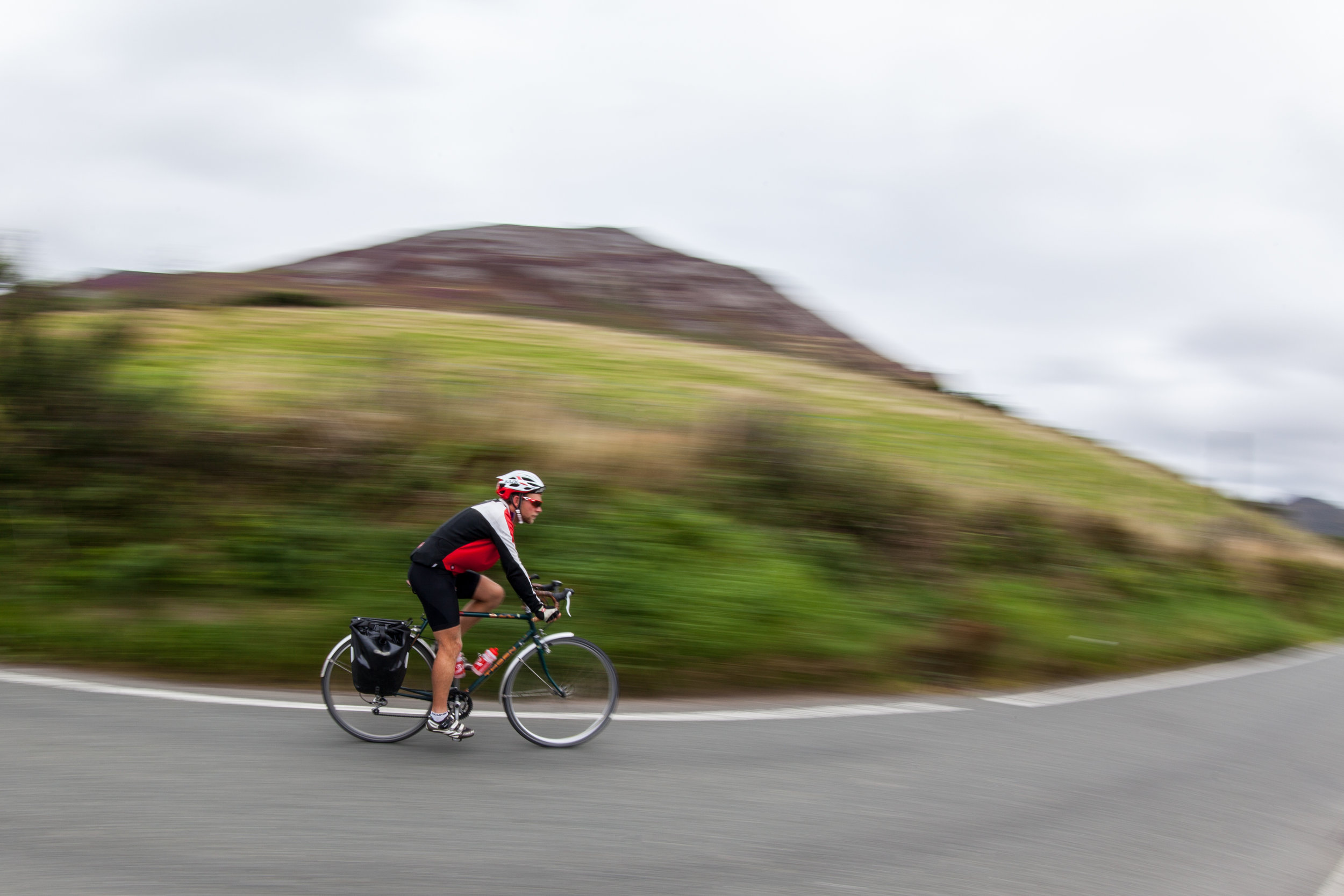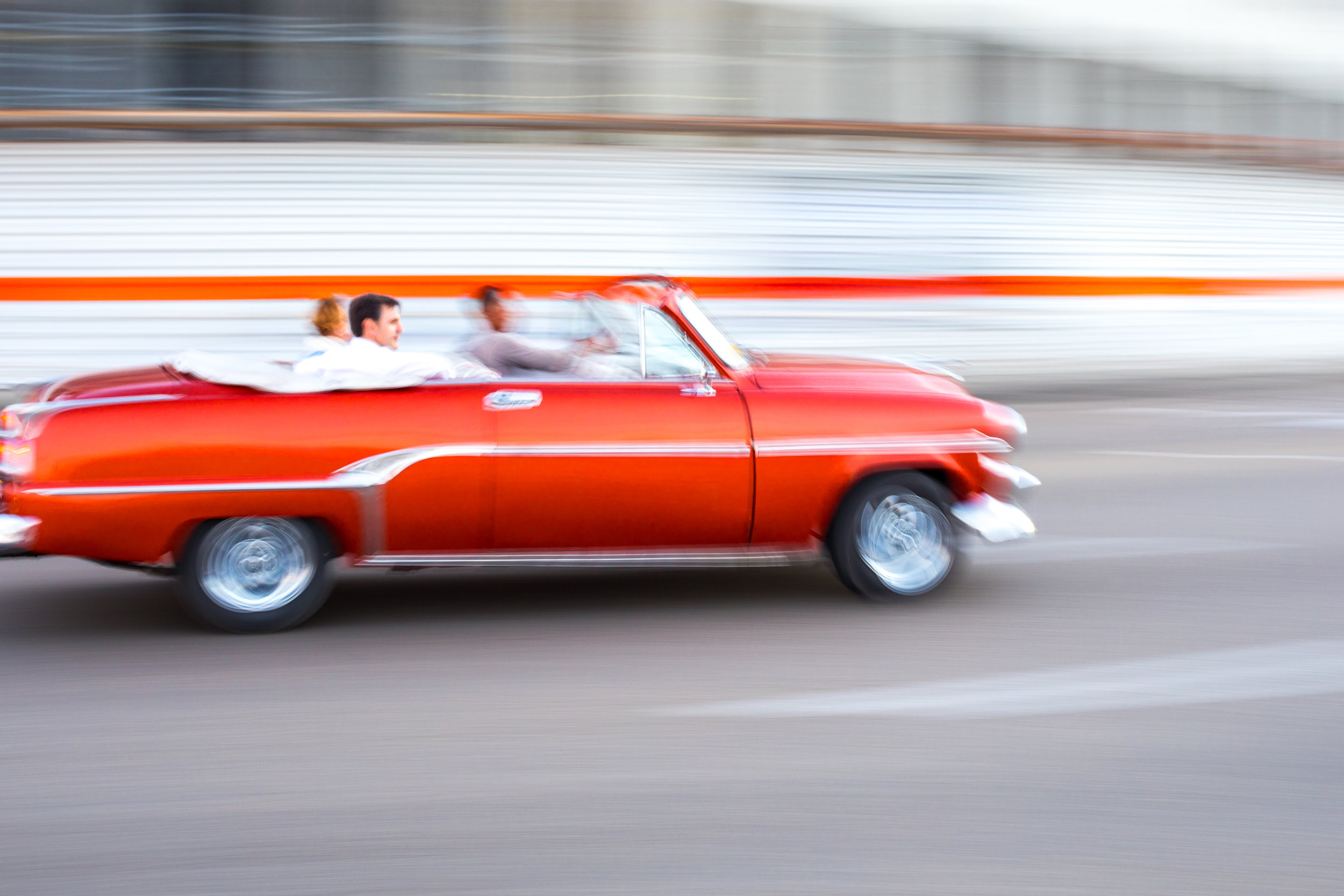What is panning? Panning is a technique used when photographing moving subjects. The basic idea behind panning photography is that you pan your camera along in time with the moving subject. Once perfected it can produce images with a relatively sharp subject and a blurred background. This blurring of the background adds to the overall feeling of speed and movement and can be used effectively with any fast moving subject such as cars, animals, cyclists etc. Click through the slideshow below for some panning photography examples that I have taken on my travels:
How to master the photographic technique of panning
Panning photography requires a lot of practice and often some luck. For successful panning your camera should follow the subject's movement whilst matching it's speed and direction. Panning is easiest with subjects that are moving in a relatively straight line so that you can predict where they will be moving to. A recent famous example of this is the photo of Usian Bolt winning the 100 metre race at the Rio 2016 Olympics. The photographer talks about taking the photo here.
Some tips for taking successful panning photographs:
Use a slow shutter speed. Experiment depending on the light and speed of the subject but start with 1/60 or lower. Bear in mind that the faster your shutter speed the easier it will be to keep the subject crisp. The faster the subject, the more difficult it will be to pan, meaning cyclists and skateboarders will be easier to pan than motorcycles and racing cars.
Track your subject. Follow the subject before during and after the shot in a smooth and continuous motion.
Set the Shooting mode to Continuous. This will allow for more opportunity to capture the best moment as well as minimising camera shake from pressing the shutter.
Choose an interesting background. Although the background will be blurred it will form an important part of the photo so choose a background that is interesting and colourful.
Keep your camera as stable as possible. Due to the slower shutter speed there is an increased chance of motion blur. I recommend using the viewfinder as opposed to an LCD screen when panning.
Practice makes perfect. As with everything in photography, practice is required. Try panning with different moving subjects and in different locations until you master this difficult technique. I had some time recently to give the technique a revisit in Havana with all of its colourful vintage cars.
More of my travel photography can be found on my website, my Instagram, and my Flickr account. If you are interested in purchasing any prints, using an image online or would like further information please send me an email at: geraintrowlandphotography@gmail.com.
